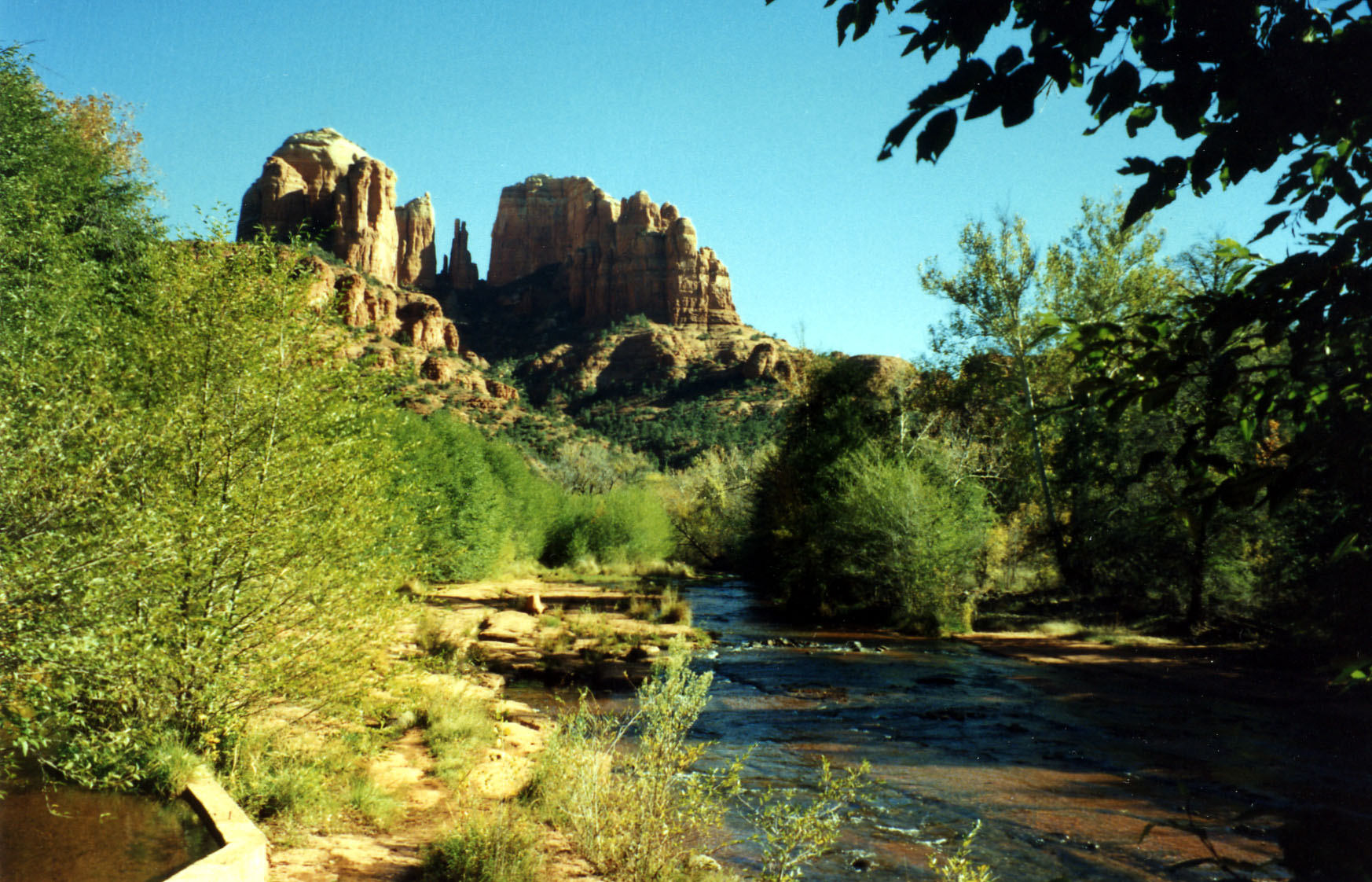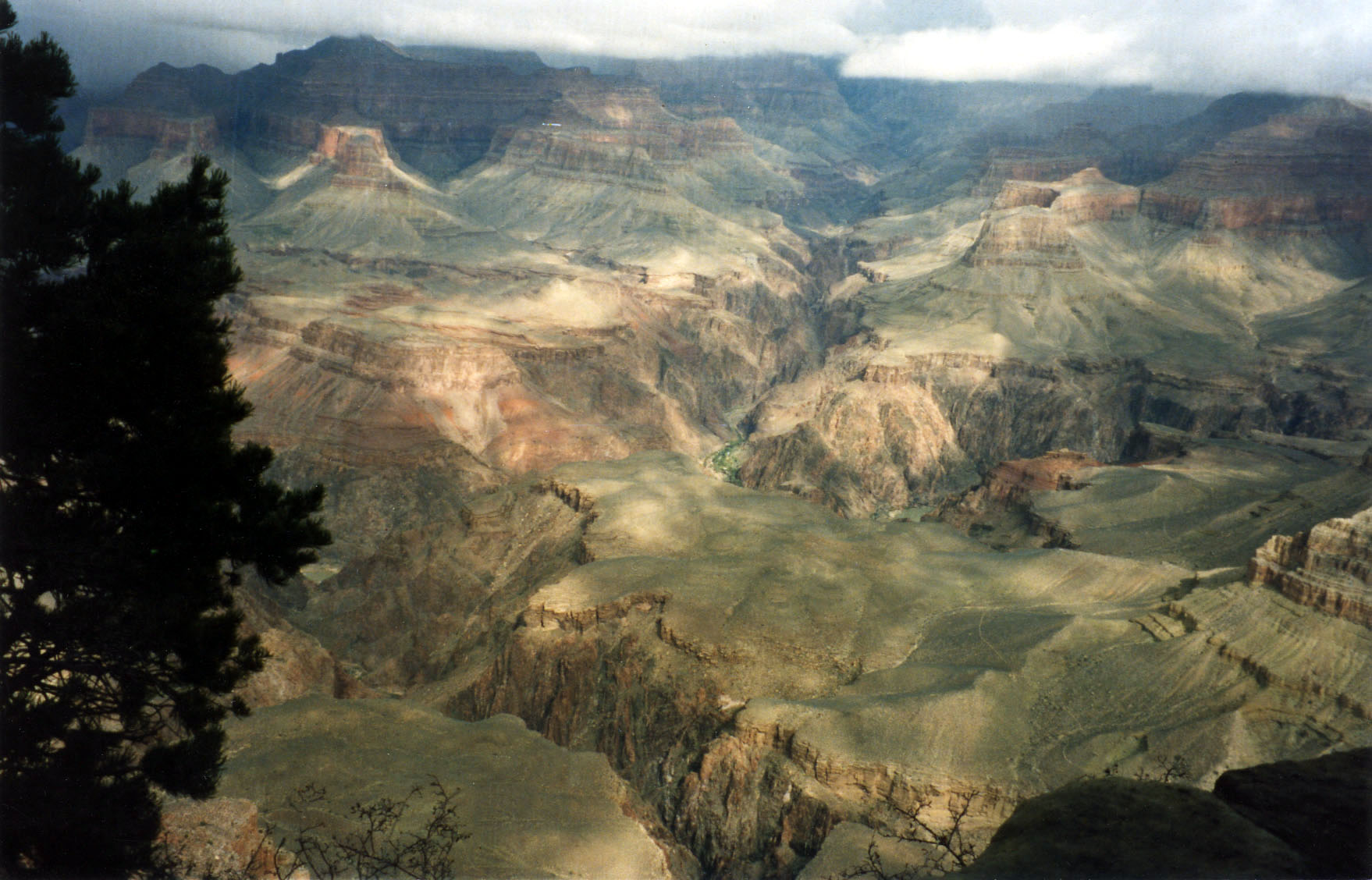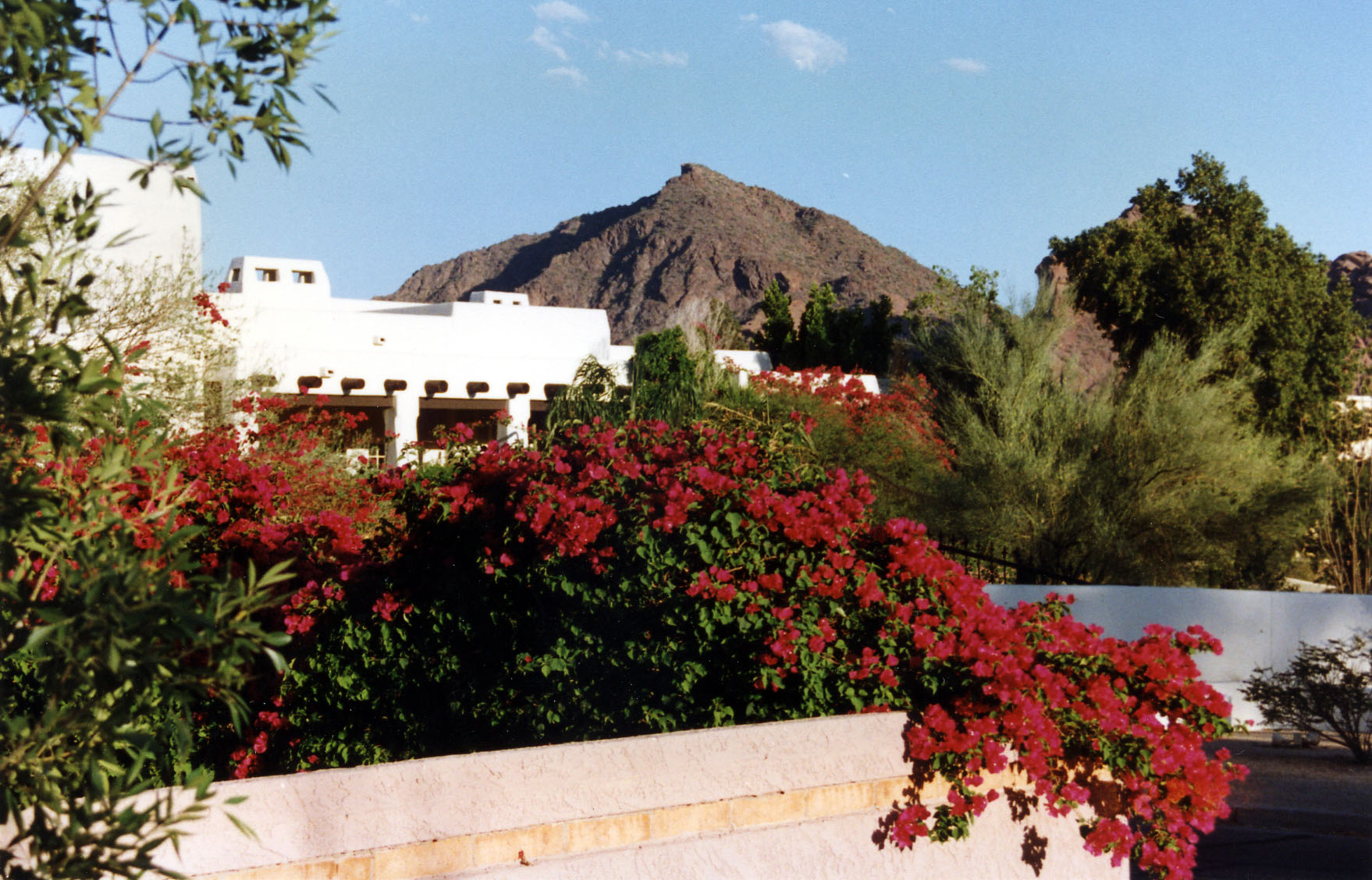

ARIZONA
Arizona is a hiker's paradise that is best known as the 'Grand Canyon State.' Hot, arid deserts, lush river valleys, extensive canyons, coniferous forests and alpine tundra all characterize its varied terrain. It is an intriguing blend of unrivaled natural beauty and a fascinating history of ancient civilizations, native Indian tribes, early Spanish missions and old mining towns.
 |
Oak Creek and Cathedral Rock Sedona |
At the time of Columbus' voyages to the New World, Apaches and Navajos had migrated from northwest Canada and were beginning to settle in Arizona where several other native tribes were already living. The Spanish Coronado Expedition left Mexico and entered Arizona for the first time in 1539 in search of the legendary wealth of the seven cities of Cibola. The cities of gold were never found but it was a party of this expedition that came upon the great river beyond the Hopi Villages and the awesome chasm of the Grand Canyon. In the absence of discernable wealth, few Europeans ventured into the scorched deserts where water was scarce, the heat was unbearable and rattlesnakes, tarantulas, scorpions and Gila Monsters (poisonous lizards) made their nests. It was not until almost a century later that Father Eusebio Francisco Kino discovered the ruins of a Hohokam village near Bac on his way to California. The Indians living in the area had no knowledge of the farming and irrigation techniques of the Hohokams so the Jesuit Padres taught them modern agricultural methods as well as the manufacture of adobe bricks and they constructed a number of missions along the Santa Cruz River. Franciscan missionaries from colonies along the Rio Grande also built churches among the Hopi pueblos. However, the priests were killed and the churches were burnt in a Hopi uprising in 1680.
 |
Grand Canyon |
Mexican rule did not last for long. American Mountain Men and traders ventured into this forbidding land after the Spanish troops were gone. Mountain Men were trappers who lived off the land, set their own traps and sold their furs to the highest bidder. Traders purchased furs from the trappers and also from the Indians and sold them provisions and tools. Newly independent Mexico was never able to enforce its tariffs and laws on the American traders because the area had been neglected during the Mexican Wars of Independence (1811-1822) and the land to the north of the Gila River was eventuallly annexed by the United States at the outcome of the war with Mexico between 1846 and 1848. This coincided with the Gold Rush in California in 1848 and the Territory of New Mexico that was established in 1850 served mainly as a passageway to California. Later, the United States acquired the land to the south of the Gila River under the Gadsden Purchase in 1854 with the intention of building a southern transcontinental railroad.
Small time miners and cattlemen followed the Mountain Men and traders into Arizona. In 1853, gold was found in the Gila River at about the same time that the Californian Gold Rush was coming to an end. The Territory of Arizona was established from the western portion of the Territory of New Mexico in 1863 just prior to the mining boom that lasted for a decade between 1870 and 1880 when large silver deposits were discovered. The richest silver mines in Arizona were found in Tombstone, famous for its stories of the Wild West and the badmen, Wyatt Earp and Doc Holliday, who lived there. Mining towns were abandoned after the mines became depleted and these old ghost towns still remind us that Arizona was once known as the last frontier.
Native tribes were initially able to assess tolls from the early pioneers who crossed their lands on the journey to California. As their number increased, they refused to pay the tolls and eventually, they began to usurp the natives' territories. Consequently, warring tribes were an ongoing problem for the first settlers in Arizona. The Apaches were particularly ferocious and it was not until after the problem was resolved in 1886, that permanent settlers and traders flocked to Arizona. Statehood was granted to the 48th state in 1912.
 |
Camel Back Phoenix |

Adventures Great and Small © copyright 1996-2005